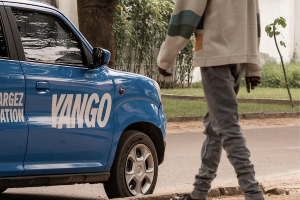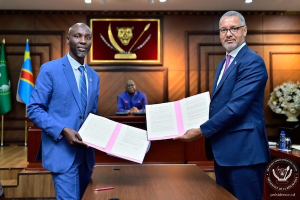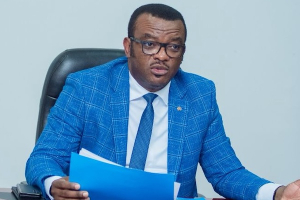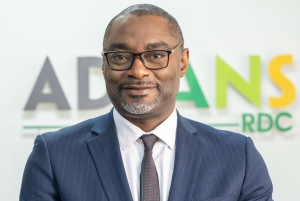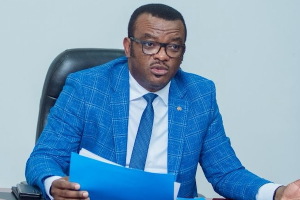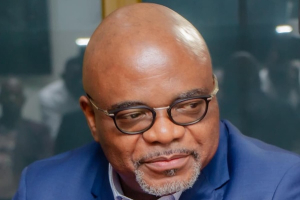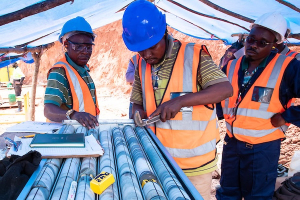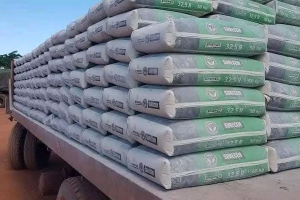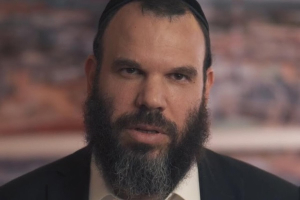Equipe Publication
VTC à Kinshasa : Yango seul en piste après l’interdiction de ses concurrents
Sept entreprises de transport avec chauffeur (VTC) ont été interdites d'exercer leurs activités à Kinshasa, capitale de la République démocratique du Congo (RDC), selon un communiqué publié le 14 juillet 2025 par le ministre provincial des Transports et Mobilité urbaine, Amisso Yoka Lumbila Bob.
D’après ce communiqué, la décision fait suite à une mission de contrôle de conformité administrative menée par l’administration provinciale auprès des sociétés de VTC opérant dans la ville. À l’issue de cette opération, une seule plateforme, Yango, a été reconnue en règle et autorisée à poursuivre ses activités.
En revanche, Majaabu Caab, Car Nayo, Cars Express, Heetch RDC, Kin Tai, une société VTC non identifiée, ainsi qu’Africab, ont été déclarées non conformes à la réglementation en vigueur et se voient formellement interdites d’exercer à Kinshasa.
La mesure s’appuie sur l’arrêté du 26 mars 2013, qui fixe les taux des droits, taxes et redevances dans le secteur du transport, tout en imposant aux opérateurs de se conformer aux exigences administratives définies par le ministère provincial.
En mai 2025, ce même ministère avait déjà lancé une opération d’identification de tous les chauffeurs VTC, conformément à l’arrêté n°374 du 20 décembre 2020. L’objectif était double : renforcer la sécurité des passagers et assurer une meilleure fiscalisation du secteur. Cette initiative visait également à distinguer les chauffeurs certifiés des conducteurs non autorisés, réduisant ainsi les risques d’agressions, d’enlèvements ou d’absence de couverture d’assurance.
Ronsard Luabeya, stagiaire
Lire aussi :
Mobilité urbaine en RDC : 71 % des usagers se tournent vers la moto-taxi en 2025
Lithium de Manono : l’Américain Kobold signe un accord de principe avec Kinshasa
Le gouvernement a signé, ce 17 juillet 2025, un « accord de principe » avec la société américaine Kobold Metals sur l’exploration minière en République démocratique du Congo (RDC), annoncent les services de communication de la présidence de la République. La signature du document par le ministre des Mines, Kizito Pakabomba, et le directeur général de Kobold Metals en RDC, Benjamin Katabuka, s’est faite en présence du président Félix-Antoine Tshisekedi.
Présenté par Kinshasa comme un « partenariat stratégique visant à ouvrir la voie aux investissements américains dans le secteur », l’accord de principe porte notamment sur le développement du projet de lithium de Manono. Situé dans la province du Tanganyika, ce gisement est considéré comme ayant « le potentiel de devenir une mine de lithium à grande échelle et de longue durée ».
La société américaine, soutenue par des investisseurs comme Bill Gates et Jeff Bezos, a, le 21 janvier dernier, fait une offre aux autorités congolaises. Elle propose de mettre fin au contentieux entre la RDC et AVZ Minerals Limited sur le gisement de Manono, en accordant une « compensation appropriée » à la compagnie australienne. En échange, celle-ci abandonnerait ses prétentions sur Manono à son profit. Dans cette perspective, AVZ et Kobold avaient annoncé, le 6 mai dernier, la conclusion d’un accord-cadre prévoyant qu’« AVZ cède ses intérêts commerciaux dans le gisement de lithium de Manono à Kobold, à une juste valeur ».
Sauf que, le 24 juin, AVZ a annoncé la reprise de la procédure d’arbitrage engagée contre l’État congolais devant le Centre international pour le règlement des différends relatifs aux investissements (CIRDI), gelée un mois plus tôt pour favoriser un règlement à l’amiable du différend. Ce qui a laissé planer le doute sur l’issue de l’offre de Kobold, pourtant soutenue par le gouvernement américain, avec qui Kinshasa discute actuellement d’un accord minier en échange du soutien des États-Unis pour le retour de la paix à l’est de la RDC.
Pour l’instant, on ignore sur quoi le gouvernement congolais et Kobold se sont mis d’accord au sujet du développement du projet de lithium de Manono. Par contre, on sait que l’entreprise américaine « s’est engagée » à utiliser des technologies « assez avancées » comme l’intelligence artificielle dans l’exploitation minière en RDC. Elle a aussi promis d’investir dans la numérisation des données géologiques dans le pays. Selon son directeur général en RDC, Kobold devrait déposer prochainement des demandes de permis de recherche.
Pierre Mukoko
Lire aussi :
Lithium de Manono : AVZ relance l’offensive judiciaire, l’offre de KoBold fragilisée
Lithium de Manono : Benjamin Katabuka en première ligne face à Kinshasa
Lithium de Manono : Zijin Mining engage l’extension de la centrale de Mpiana-Mwanga
DRC Turns to Banks to Finance Civil Servants’ Retirement Packages
The Democratic Republic of Congo is considering a partnership with commercial banks to help finance end-of-career benefits for civil servants eligible for retirement. Jean-Pierre Lihau, Minister of Public Service, Administrative Modernization, and Public Service Innovation, outlined this initiative in an information note presented during the Council of Ministers meeting on July 11, 2025.
The retirement process, which restarted in 2022 with an initial wave of 11,000 retirements, has since stalled. As a result, the number of eligible retirees has grown, now exceeding 314,000 across all pension schemes.
In response, Lihau submitted a ten-year retirement plan, from 2025 to 2035, to the Council. The proposed partnership with commercial banks is an "innovative" mechanism designed to streamline the process. The effective relaunch began with the signing of retirement orders for secretaries-general, directors, and division heads, whose payments and benefits are currently being processed.
Debt-Free Financial Structure
According to the Council’s report, this arrangement would allow banks to advance benefits to retirees. The state would then commit to repaying the banks in monthly installments equivalent to the retirees' former salaries. This mechanism leverages the existing payroll banking system and is designed to avoid any new debt issuance, making it "budget-neutral," as stated in the report.
The scheme is expected to be operational by 2026, following the signing of a memorandum of understanding between the state and the participating banks. This agreement will define the practical terms of the partnership.
An inter-institutional technical commission will oversee the implementation. This commission will include representatives from the Presidency, the Prime Minister’s Office, the Ministries of Public Service, Budget, and Finance, and the National Social Security Fund for Public Servants (CNSSAP). This body will ensure the regularity, sustainability, and automaticity of the retirement process, while balancing the number of retirements with CNSSAP’s capacity for regular pension payments.
Security Spending Constraints
In the 2025 finance law, the state pledged to allocate 20 billion Congolese francs per month, about $7 million, to fund retirements. However, according to Jean-Pierre Lihau, this commitment has not yet been met due to increased pressure on public finances from rising security expenditures. For example, between January and April, over half of the budget allocated for exceptional security spending had already been used.
The total cost of the ten-year plan, 2025 to 2035, has not yet been disclosed. However, the initial draft of the 2025 finance law included a budget line of 379.4 billion Congolese francs, about $128.4 million, for retirement benefits.
This retirement plan comes as the administration faces an overload, a consequence of a massive recruitment wave between 2017 and 2018. During that period, nearly one million employee ID numbers were issued without prior budgetary planning. This situation continues to strain public finances and human resource management. As part of a streamlining strategy, the minister plans to replace only one in two retiring civil servants.
Timothée Manoke (Intern)
Pièces d’assemblage : le régime douanier préférentiel rétabli en RDC
Le gouvernement congolais a réintroduit, dans la loi de finances rectificative pour l’exercice 2025 adoptée en juin dernier, le régime douanier préférentiel applicable aux importations de pièces détachées, parties, accessoires et sous-ensembles destinés à l’assemblage industriel.
Conformément à l’ordonnance-loi du 21 septembre 2012, ces importations bénéficient de droits de douane réduits, fixés à 5 % pour les composants importés en CKD (Completely Knocked Down, ou pièces totalement démontées), 10 % pour ceux en MKD (Medium Knocked Down, ou pièces partiellement démontées).
Toutefois, l’accès à ce régime reste soumis à conditions. L’importateur doit obtenir une autorisation préalable du directeur général des douanes, délivrée sur avis conforme du ministre en charge de l’Industrie.
Ce régime avait été supprimé dans la loi de finances initiale de 2025. L’objectif affiché était alors d’accroître les recettes douanières, avec une hausse visée de 26,8 %. Selon le rapport sur les dépenses fiscales de l’exercice 2023, les régimes dérogatoires ont représenté 49 % des pertes de recettes fiscales, soit 2 791,6 milliards de francs congolais (FC).
Le rétablissement du régime préférentiel s’inscrit dans une logique de soutien à l’industrialisation locale, en allégeant la charge fiscale pour les entreprises qui procèdent à l’assemblage sur le territoire national. Les objectifs affichés sont multiples : création d’emplois, transfert de technologie, et renforcement du tissu industriel local.
Plusieurs projets industriels en cours sont éligibles à ce régime. Depuis janvier 2025, Zahira SPRL, représentant officiel de Tata Motors, a annoncé la création d’une usine d’assemblage automobile – notamment de bus – ainsi qu’un parc industriel dans la zone économique spéciale de Maluku, près de Kinshasa.
Par ailleurs, Suprême Auto, en partenariat avec le constructeur indien Ashok Leyland, exploite depuis 2023 une unité de montage de bus destinés au transport en commun dans la capitale.
Ronsard Luabeya, stagiaire
Jean-Luc Nzoubou prend la tête de l’association des microfinances de RDC
Advans Congo a annoncé, ce 16 juillet 2025, l’élection de son directeur général, Jean-Luc Nzoubou, à la présidence du conseil d’administration de l’Association nationale des institutions de microfinance (ANIMF) en République démocratique du Congo (RDC).
« Cette élection témoigne de la reconnaissance de son leadership et de son engagement en faveur d’une microfinance responsable, durable et inclusive. Son expertise constituera sans nul doute un levier précieux pour renforcer la gouvernance du secteur et porter plus haut les ambitions de l’ANIMF-RDC », a commenté l’institution.
Jean-Luc Nzoubou dispose d’une solide expérience dans le secteur de la microfinance à l’échelle du continent. Depuis janvier 2022, il dirige Advans Congo à Kinshasa. Auparavant, il a exercé comme Deputy CEO d’Advans Nigeria (2019–2022), après un parcours marquant en Côte d’Ivoire où il a été successivement directeur des opérations adjoint, directeur de l’exploitation puis directeur général adjoint entre 2013 et 2019. Avant cela, il avait déjà œuvré pendant sept ans chez Advans Cameroun, à la tête des ressources humaines et de la logistique.
Cette progression au sein du groupe Advans lui a permis d’acquérir une expertise reconnue en gestion institutionnelle, développement opérationnel et transformation organisationnelle.
Créée le 28 septembre 2012, l’ANIMF-RDC est une association professionnelle à but non lucratif qui regroupe les institutions de microfinance agréées opérant en RDC. Fondée pour servir d’unique organe représentatif du secteur, elle s’est structurée autour de statuts, d’un règlement d’ordre intérieur, d’un code de conduite et d’un plan stratégique validé par ses membres. Après un démarrage lent, elle est devenue pleinement opérationnelle en octobre 2013 avec la tenue de sa première assemblée générale élective.
L’association joue désormais un rôle central dans la coordination, la professionnalisation et la défense des intérêts des acteurs de la microfinance en RDC.
La désignation de Jean-Luc Nzoubou intervient alors qu’Advans Congo connaît une phase de forte croissance. En 2024, l’institution a enregistré un encours brut de crédits de plus de 114 milliards de francs congolais, soit une hausse annuelle de 49 %. Pour 2025, elle ambitionne de franchir la barre des 100 millions de dollars, grâce à un réseau élargi à 11 agences et à une stratégie de financement ciblant les micros et petites entreprises.
Ces résultats opérationnels renforcent la légitimité de Nzoubou à impulser une nouvelle dynamique au sein de l’ANIMF-RDC et à accompagner la professionnalisation du secteur à l’échelle nationale.
Boaz Kabeya, stagiaire
Lire aussi :
Financement : Advans Congo prévoit d’injecter 100 millions $ dans l’économie 2025
La RDC mise sur les banques pour financer le départ à la retraite des agents publics
La République démocratique du Congo envisage de conclure un partenariat avec des banques commerciales afin de faciliter le financement des indemnités de fin de carrière des agents publics admis à la retraite. Cette orientation figure dans la note d’information présentée par le ministre de la Fonction publique, de la Modernisation de l’administration et de l’Innovation du service public, Jean-Pierre Lihau, lors du Conseil des ministres du 11 juillet 2025.
Relancé en 2022 avec une première vague de 11 000 départs à la retraite, le processus s’est de nouveau interrompu. Résultat : le nombre d’agents éligibles à la retraite n’a cessé d’augmenter pour atteindre plus de 314 000 à ce jour, tous régimes confondus.
Face à cette situation, Jean-Pierre Lihau a soumis au Conseil un plan décennal (2025–2035) de mise à la retraite. Le partenariat avec les banques commerciales y est présenté comme un mécanisme « innovant », censé fluidifier le processus. La relance effective a été amorcée avec la signature des ordonnances de mise à la retraite des secrétaires généraux, directeurs et chefs de division, dont le paiement des droits et avantages est en cours.
Montage financier sans endettement
Selon le compte rendu du Conseil, ce montage permettrait aux banques d’avancer les indemnités aux retraités, l’État s’engageant à les rembourser sous forme de mensualités équivalentes aux anciennes rémunérations. Il repose sur les acquis de la bancarisation de la paie et est conçu pour éviter tout recours à l’endettement, ce qui le rend « sans surcoût pour le budget », selon les termes du compte rendu.
Le dispositif devrait être opérationnel dès 2026, mais sa mise en œuvre sera précédée par la signature d’un protocole d’accord entre l’État et les banques payeuses, qui en fixera les modalités pratiques.
Une commission technique interinstitutionnelle sera chargée de piloter la mise en œuvre de ce mécanisme. Elle réunira des représentants de la Présidence, de la Primature, des ministères de la Fonction publique, du Budget et des Finances, ainsi que de la CNSSAP (Caisse nationale de sécurité sociale des agents publics de l’État). Cette structure aura pour mission de garantir : la régularité, la soutenabilité, et l’automaticité du processus de retraite, tout en veillant à l’équilibre entre le nombre de départs et la capacité de la CNSSAP à assurer le versement régulier des pensions.
Contrainte sécuritaire
Dans la loi de finances 2025, l’État s’est engagé à allouer chaque mois 20 milliards de francs congolais (environ 7 millions de dollars) au financement des départs à la retraite. Mais, selon Jean-Pierre Lihau, cet engagement n’est pas encore respecté, en raison des pressions accrues sur la trésorerie publique liées à la hausse des dépenses sécuritaires. À titre d’illustration, entre janvier et avril, plus de la moitié du budget consacré aux dépenses de sécurité exceptionnelles avait déjà été consommée.
Le coût total du plan décennal (2025–2035) n’a pas encore été dévoilé. Toutefois, dans la version initiale de la loi de finances 2025, une enveloppe de 379,4 milliards de francs congolais (environ 128,4 millions de dollars) avait été inscrite au budget pour couvrir les indemnités de retraite.
Ce plan de mise à la retraite intervient dans un contexte de surcharge administrative, conséquence d’une vague massive de recrutements entre 2017 et 2018, période durant laquelle près d’un million de numéros matricules ont été attribués sans planification budgétaire préalable. Cette situation continue de peser lourdement sur les finances publiques et la gestion des ressources humaines de l’État. Dans une logique de rationalisation, le ministre prévoit de remplacer un seul agent sur deux admis à la retraite.
Timothée Manoke, stagiaire
DR Congo Appoints Noël Litanga to Lead $500M Digital Transformation Project
Highlights:
• Noël Litanga officially appointed coordinator of the PATN on July 11 in Kinshasa
• $500M funding from the World Bank and French Development Agency to support digital access, services, and skills
• PATN to deploy 10,000 km of fiber optic cable and train 6,000 youth
Noël Litanga has been appointed coordinator of the Digital Transformation Support Project (PATN) in the Democratic Republic of Congo (DRC), with his official installation taking place on July 11, 2025, in Kinshasa. The ceremony was overseen by the chief of staff of the Ministry of Posts, Telecommunications, and Digital Affairs.
Backed by $400 million from the World Bank and €100 million from the French Development Agency (around $116 million at current rates), the PATN aims to enhance access to digital services, build infrastructure for public service delivery, and foster advanced digital skills aligned with industry and innovation needs.
The project includes rolling out 10,000 kilometers of fiber optic network, developing a secure intranet for government institutions, and launching a digital one-stop shop for administrative services. It also plans to train 6,000 young people and implement an inclusion program focused on women and vulnerable groups.
Litanga was selected for the role through a competitive process led by the World Bank. He holds an MBA from Robert Kennedy College and has completed executive training at Harvard Business School and London Business School. With over 30 years of experience in digital and telecommunications across both public and private sectors, he previously served as chief of staff to the Minister of Digital Affairs (2021–2024) and as a consultant to SCPT (2015–2021).
In the private sector, Litanga was Vice President of IT and Billing at Bharti Airtel Congo (2011–2014) and held similar roles at Bharti Airtel Gabon and Celtel Madagascar between 2006 and 2011.
This article was initially published in French by Boaz Kabeya, intern
Edited in English by Ola Schad Akinocho
Loncor Gold Receives Unsolicited Offer Amid Adumbi Gold Project Developments in DR Congo
Highlights:
• Loncor Gold has received a non-binding, unsolicited proposal from a third-party investor.
• A special committee has been appointed to evaluate the offer.
• The offer comes as gold prices surge, boosting investor interest in the Adumbi project.
Canadian mining firm Loncor Gold announced it has received a non-binding and unsolicited offer from an undisclosed third-party investor regarding a potential transaction. While the nature of the deal—be it an acquisition, merger, or equity stake—remains unclear, a special committee of directors has been formed to assess the proposal.
This development coincides with ongoing exploration work at the Adumbi gold deposit, Loncor’s flagship asset located in the Ngayu greenstone belt in northeastern Democratic Republic of Congo (DRC). The company controls 84.68% of the project, with 10% held by the Congolese state through its mining company Sokimo.
According to a 2021 Preliminary Economic Assessment (PEA), the site could yield approximately 303,000 ounces of gold over 10.3 years, requiring a $392 million initial investment. Loncor indicated that further updates may be released “should circumstances warrant.”
The announcement comes amid a 30% year-to-date rise in global gold prices. The metal trades above $3,000 per ounce, per World Gold Council data. The bullish market environment could help Loncor attract a strong operational partner for Adumbi.
This article was initially published in French by PM (Agence Ecofin).
Edited in English by Ola Schad Akinocho
Kinshasa Cement Prices Drop Over 50% After Truckers' Strike Ends
Highlights:
• Price of a 50kg cement bag drops from 60,000 FC to 31,000–33,000 FC
• Supply disruptions caused by May–June truckers' strike now resolved
• Prices may fall further if logistics normalize
Cement prices in Kinshasa have dropped sharply in recent days, returning to near pre-crisis levels following the end of a major truckers' strike that had disrupted supply lines across the Congolese capital.
From highs of up to 60,000 Congolese Francs (CF) (≈21 USD) during the strike, a 50kg bag of cement is now selling between CF31,000 and CF33,000 (≈11 USD), down 52.4%. In some areas like Kingabwa (Limete district), prices remain slightly higher, at up to CF35,000, but further reductions are expected if supply continues uninterrupted. A bag could sell for $10 according to some predictions.
The spike in prices was triggered by a logistics paralysis due to a truckers' strike that took place between late May and early June. The strike, sparked by a provincial government ban on daytime travel for trucks over 20 tons, caused a severe shortage in cement and drove prices to record levels.
Talks between national and provincial authorities, the Congolese business federation (FEC), and transport unions led to the suspension of the strike in June, allowing deliveries to resume and easing pressure on the market.
This article was initially published in French by Ronsard Luabeya, intern
Edited in English by Ola Schad Akinocho
Mining Governance in the DRC: Dan Gertler's Testimony Exposes Systemic Flaws
• Dan Gertler’s testimony details secretive payments and complex asset structures that enabled private — and often foreign — interests to control the DRC’s critical mining resources.
• Gertler admits to providing cash loans directly to the Central Bank and state companies, revealing weak financial oversight during the Kabila era.
• Despite some recent reforms, transparency and governance problems persist, hindering the DRC’s ability to maximize benefits from its vast copper and cobalt reserves.
Israeli businessman Dan Gertler’s testimony has exposed mismanagement in the Democratic Republic of Congo’s mining sector under President Joseph Kabila from 2001 to 2019. His statements are part of an April 2024 arbitration ruling in Israel, tied to a dispute with former partners Moises and Mendi Gertner. Bloomberg reported the contents on July 14, 2025, citing the NGO PPLAAF as the source.
Though Gertler denies any wrongdoing, he has faced U.S. sanctions since 2017 for allegedly amassing wealth through shady mining and oil deals in the DRC. In his testimony, he admitted to paying large sums to Kabila's close ally, Augustin Katumba Mwanke, to obtain permits—bolstering long-standing corruption allegations.
Cash Loans to BCC
Gertler’s testimony also highlights the opaque structuring of interests in gold, iron, and copper mining permits involving himself and Augustin Katumba Mwanke. Several assets were deliberately placed in separate legal entities, in accordance with their arrangements. Gertler claims he held mining stakes worth several hundred million dollars on behalf of Katumba, while remaining unaware of other Congolese stakeholders involved. This layered structure complicated oversight and enabled both private and foreign actors to indirectly influence the control of strategic Congolese mineral resources.
In addition, Gertler acknowledged providing “cash loans” to the Central Bank of Congo (BCC) and the state-run diamond company MIBA. He defended this by citing the absence of a functioning banking system at the time. Nonetheless, these transactions expose a troubling lack of oversight in financial flows within the DRC’s extractive industry.
The arbitration ruling, spanning over 1,200 pages and grounded in more than 10,000 pages of testimony and exhibits, did not aim to assess the legality of the transactions. The arbitrator found no compelling proof of corruption or illicit payments. Still, the disclosures echo long-standing criticisms of governance in the mining sector—use of front men, absence of transparency regarding beneficial owners, murky licensing processes, and informal, loosely regulated financial practices.
EITI Notes Progress
Corruption remains a serious concern in the Democratic Republic of Congo’s extractive industries. Major players like Glencore Plc have faced legal consequences, paying hundreds of millions of dollars in fines and settlements across multiple jurisdictions—including the U.S., U.K., Switzerland, and the DRC—for corrupt practices linked to mining asset acquisitions.
Dan Gertler’s involvement continues to attract scrutiny. Despite agreeing in 2022 to surrender some assets, recent tax proceedings confirm that he still benefits from royalty rights in three large-scale copper and cobalt projects. His ongoing presence highlights the persistence of opaque financial arrangements in the sector.
The DRC has made incremental progress. EITI’s 2024 report notes the country's commitment to beneficial ownership transparency, with public disclosures dating back to 2015—though data gaps remain. The 2018 mining code mandates the publication of contracts and permits, but implementation remains inconsistent. The IMF, in its January 2025 report, acknowledged advances in reform, while urging the DRC to strengthen enforcement and reduce loopholes—particularly the 25% threshold for beneficial ownership, which remains too permissive.
Economic Stakes
Further governance concerns arise from the government's recent decision to require oil exports to use officially approved charterers. While intended to improve control over export logistics, this raises new questions about the accountability and transparency of intermediaries.
The Democratic Republic of Congo relies heavily on its mining sector, making transparency vital for economic growth. In 2024, the country produced 3.3 million metric tonnes of copper—a 12.6% year-on-year increase—ranking it second globally. It remains the world’s top cobalt producer, with 170,000 tonnes extracted and reserves estimated at 6 million tonnes.
Mining accounts for roughly 6% of national GDP and provides 40% of government income. Stronger governance would help the DRC maximize revenues, attract responsible investors, improve wealth distribution, and meet international expectations for ethical supply chains of key minerals like copper and cobalt.
This article was initially published in French by Georges Auréole Bamba
Edited in English by Ange Jason Quenum





